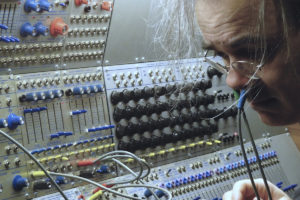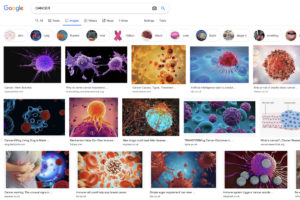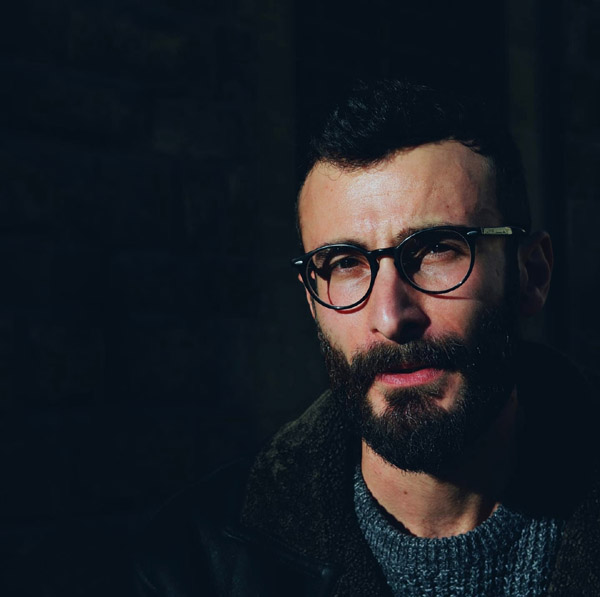In this complicated period of semi-physical immobility – restrictions have diminished, but displacements are still very limited – museums, galleries and exhibition spaces have rethought and reshaped their programs. Pending their reopening – the date would be 18 May 2020 – many of the activities have been transferred to the various social and web platforms. In the panorama of independent spaces and projects, studioconcreto, founded in Lecce in 2018, certainly represents one of the most innovative and pushing realities: the different initiatives that started at the beginning of the new year demonstrate this. We intercepted the founders of this project, Luca Coclite and Laura Perrone, to know the news, and together the ways in which they carried out their programming.
Antongiulio Vergine: It may seem trivial, but the first thing I would like to ask you is: how did you spend this period of quarantine?
Luca Coclite and Laura Perrone: Enclosed in our daily life which largely corresponds to the same as always, engaged in remote work, and kidnapped by a physiological concern for a chronic uncertainty about the future which reveals our poor resistance in the face of the state of exception. After an initial phase of loss, we tried, as far as possible, to understand what had happened. Nevertheless, several times we have found ourselves disoriented in the face of a schizophrenic reality that has generated a confused and contradictory management of the emergency, and created an excessive flow of dissonant information that has contributed to a polarization of public and intellectual opinion.
Studioconcreto, an artistic and curatorial project founded by you in Lecce in 2018, has been renewed at the beginning of the year. What are the initiatives you have started?
We closed 2019 with good news that allowed us, despite this breaking phase, to configure the projects that we had in mind for some time. In fact, we are winners of the “Creative Living Lab – II Edition” prize promoted by the Directorate General for Contemporary Creativity and Urban Regeneration, which will allow us to develop Scuola Popolare – performance di parola tra gesto e architettura (Popular School – word performance between gesture and architecture). In the first days of January, however, we were engaged in the realization of the choral project BAITBALL (01), the first episode of a periodic and nomadic series dedicated to collaborative practices in contemporary art. Promoted by Like a Little Disaster and Pane Project, this large group exhibition took place in the historic Palazzo San Giuseppe in Polignano a Mare. In this context, we invited the artist from Campania Maria Adele Del Vecchio, to whom we asked to present a narrative display of her work Beat Meierei (2017 – 2018), a traveling “social sculpture” that blends visual arts and performances with the club scene of the city of Naples and which makes use of the collaboration of artists, DJs, promoters and realities that promote the contemporary as Untitled Association. The project presented in Polignano a Mare consists of some images of documentation and a textual work which highlights the interdisciplinary and community role carried out by the idea of ”contact”, understood as relational involvement, to which we are particularly attached. In recent years, in fact, our attention has fallen on some themes that focus on the relationships between body, dance and architecture, in relation to the social space considered as a flexible and multifunctional place. Precisely from this long study path, which has been accompanying us since 2017, the projects Performance di parola tra gesto e architettura and exscenario are born, realized thanks to the support of MiBACT. Based in our popular Ina-Casa neighborhood in Lecce, the projects will consolidate collaborations with artists and with territorial realities such as Collective, Take Care, Casa a Mare, Post Disaster Rooftop and Plasticity, with which we have been interacting for some time.
Tell us in detail Scuola Popolare – Speech performance between gesture and architecture and exscenario.
In a text written a few weeks ago we declared that Scuola Popolare – speech performance between gesture and architecture is first of all a meeting of bodies, a return to the heroic role of the street, which is indispensable for the reawakening of the objective need to make community. Basically, the project aims to convey a cycle of perfomative actions within our neighborhood with the attempt to stimulate a relationship between contemporary artistic language and the neighborhood. We have involved authorial figures in the project who put the word at the center of their research, and inspired by radical pedagogy methodologies, we will try to strengthen the dialogic and proximity relationship that characterizes our practice. In addition, aiming at the functionality of the academic lecture notes, the focal points of each performance will be summarized and edited in conceptual maps as well as in other types of editorial formats, but also through installation returns designed for the street and our studio. exscenario, on the other hand, was conceived as a special channel of the project, a tool with which to reach a wider audience thanks to the online dissemination of live performances produced by studioconcreto. But the idea was born much earlier, from the need to experience a dynamic interaction between physical and virtual space, also through extemporaneous contents created specifically for the device. We like to think of exscenario as a silent tribute to the Experimental Intermedia Foundation to which we are very attached in the field of research. This page, located on our website www.studioconcreto.net, is in effect a “Gray zone”, an intermezzo between White Cube and Black Box (see Claire Bishop), a space for the immaterial that re-configures the relationship with the vision, where we intend to explore – at least in this first phase – the centrality of the desktop, now more than ever a space for relationships, information, work and education.
Due to the restrictions introduced in early March, your projects have been temporarily suspended. However, you have remodeled everything by adapting it to the web and social channels. How did the first experience of ANTIPODES by Frédéric Acquaviva come about? And what will be the next ones?
Following the health emergency, words such as proximity, body, contact entered the taboo sphere; language itself became the vector of the virus, designating a new proxemic and a general state of suspension. So we thought of reconfiguring the start of the project with a cycle of “desktop performances” designed specifically for the exscenario. This space was inaugurated by the premiere of ANTIPODES, a work composed by Frédéric Acquaviva, sound artist and composer of experimental music, who has been exploring the relationship between voice and language since 1990. With ANTIPODES Acquaviva mediates the research of the artist and poet Joël Hubaut, who since the early seventies places the notions of viruses, epidemics and contamination at the center of a reflection on art and society, developing a rhizomatic process of signs and “Epidemic writings”. ANTIPODES is a sort of sound paraphrase that refers to the narrative partition (Inferno – Purgatorio – Paradiso) of the Divine Comedy and which at this historical moment assumes a premonitory meaning. It acts as a function of a schizophrenic diegesis that we find in the words that compose it and that bring us back to a fragmented reading of the data, alternating screenshots of Google searches for images with long visual pauses composed of three symbolic colors that identify the different stages of the narration. The next collaboration will be with Claire Fontaine, a feminist artistic collective founded in Paris in 2004. With them we will focus on some issues related to the concept of “transmission” going to investigate the current value of the shared experience.
Regarding the current situation, I was struck by your words about the sudden interruption of activities. One sentence in particular: “The results of the suspension are never taken for granted, therefore they are subject to bankruptcy”. So I ask you: what do you expect from the future and what consequences will this complicated historical moment have for you?
Reflecting on the suspension, we are particularly struck by the excess of considerations and predictive analyzes, which come from all sides. Probably the meaning of that phrase is to be found precisely in this overabundance of information that suggests to us the desire to adopt a more prudent attitude to avoid, in situations of emotional stress such as these, to develop hasty more sensationalistic than plausible scenarios. Nonetheless, the possibilities hidden by the failure and the revolutionary potential of the fall teach us to question every thought, to investigate the problems with awareness, experiencing inversions and shifts in meaning. For the future, we hope to continue with the usual research and curiosity, to soon recover the possibilities of being together and, paraphrasing a phrase of the textual contribution that Frédéric Acquaviva wrote for the exscenario, to continue to interface with small groups of curious and outsider. In this sense, we hope to return soon to activate symbolic places, fragile architecture and “reconfigured spaces” through performance practices, which for the occasion become temporary landing places in which to experiment with new awareness, trying to inhabit all the possible scenarios that this world will reserve us.
To close: what do you think of the recent shift in the use of art on social platforms and on the web? Will it be the format of the future?
In reality we think that this shift is a phenomenon that is part of our present rather than our future. The discourse on digitization and the procurement of our lives to the virtual, to social networks, has accompanied us for several years now. The real / virtual, abstract / concrete, material / immaterial dichotomies acquire more vigor in a situation that forces us to be closed.
 Frédéric Acquaviva, ANTIPODES, Stockholm, EMS, 2015
Frédéric Acquaviva, ANTIPODES, Stockholm, EMS, 2015
 Frédéric Acquaviva, ANTIPODES, frame video, 2019
Frédéric Acquaviva, ANTIPODES, frame video, 2019
 Frédéric Acquaviva, ANTIPODES, record at 120 copies, 2019
Frédéric Acquaviva, ANTIPODES, record at 120 copies, 2019
 studioconcreto, Performance di Parola tra Gesto e Architettura, 2020
studioconcreto, Performance di Parola tra Gesto e Architettura, 2020
 Claire Fontaine, Untitled (Lament), 2018 Industrial frameless LED lightbox with pearl vinyl digital print. 277 × 156 × 10 cm
Claire Fontaine, Untitled (Lament), 2018 Industrial frameless LED lightbox with pearl vinyl digital print. 277 × 156 × 10 cm
 Maria Adele Del Vecchio, Beat Meierei, BaitBall, installation view, 2020. Photo Like a Little Disaster
Maria Adele Del Vecchio, Beat Meierei, BaitBall, installation view, 2020. Photo Like a Little Disaster
 Maria Adele Del Vecchio, Beat Meierei, BaitBall, installation view, 2020. Photo Like a Little Disaster
Maria Adele Del Vecchio, Beat Meierei, BaitBall, installation view, 2020. Photo Like a Little Disaster
The state of exception in which we live introduces us to a collective mega test where a process that comes from afar is accelerated, especially that of social distancing, strengthened only in the last instance by the use of tablets and smartphones. Several times we have noticed, by visiting the exhibitions, the communicative asymmetry that exists between the work enjoyed by the real and the same enjoyed on social media. In this sense, according to the progressive and tendential lack of importance in the choice of materials – which have become increasingly ephemeral, fragile and obsolescent – we have the impression that the works are studied more in order to survive on the web than to live in reality. We therefore think that the virtual space should not be a replica of the existing one but the creation of something dedicated to it and that consequently involves a series of professionalism, skills and techniques that cannot be ignored. In this period we realized that we need to develop a culture of immaterial and digital technology, necessary to recognize and appreciate the importance and meaning deriving from an artistic gesture, even if this is simply a links to open or an oleographic image to use – as Georges Perec would say – in a new “kind of space”. Nonetheless, we are convinced that the day we experience the same emotional experience on Instagram as when a ray of natural light filters through the windows of the hangar of the Dia Art Foundation in Beacon, New York (among the most incredible museums we have visited ) and hits a Torqued Ellipses by Richard Serra, then we could say we really are in the future.
Antongiulio Vergine
Info:
studioconcreto, via Francesco Ribezzo, 5-3, Lecce (LE)
info@studioconcreo.net
www.studioconcreto.net
@studio.concreto

Born in Campi Salentina (LE). After the three-year degree in Technologies for the Conservation and Restoration of Cultural Heritage at the University of Salento, I attend the Master of Science in Visual Arts at the University of Bologna. I collaborated with Galleria d’Arte Maggiore g.a.m. (Bologna) and with MUMA – Museum of the Ancient Sea in Nardò (LE). I am interested in events concerning contemporary art, in particular those related to video-photographic and performative practices. I write for ATPdiary and Juliet Art Magazine.






NO COMMENT